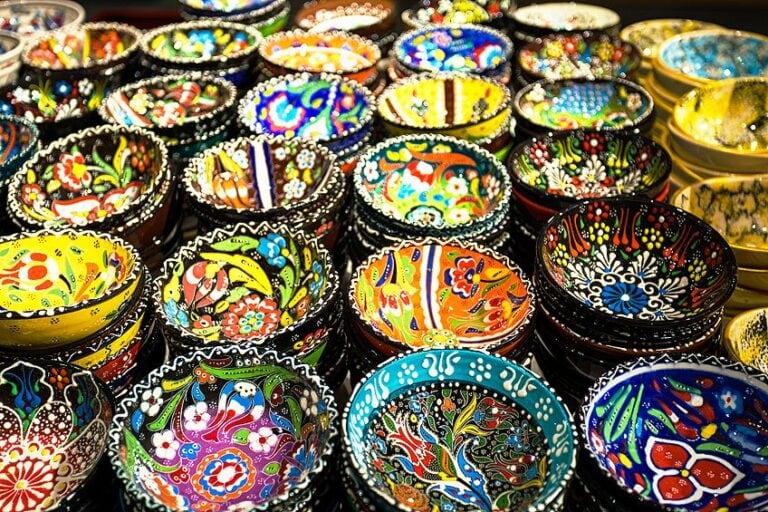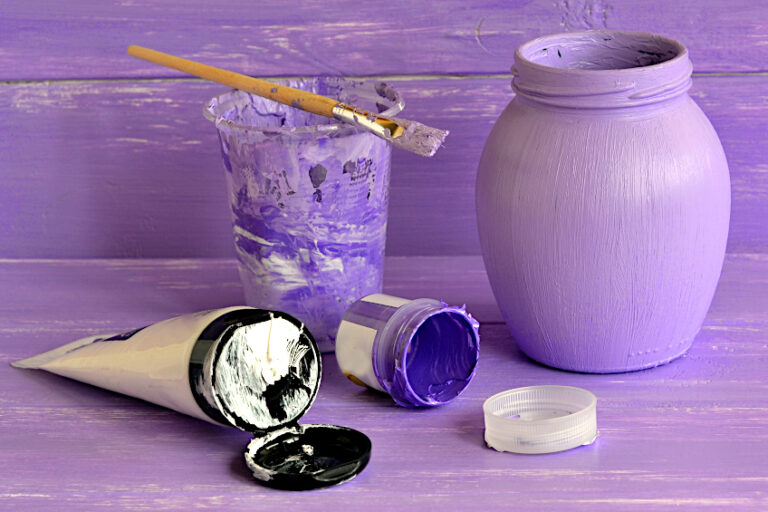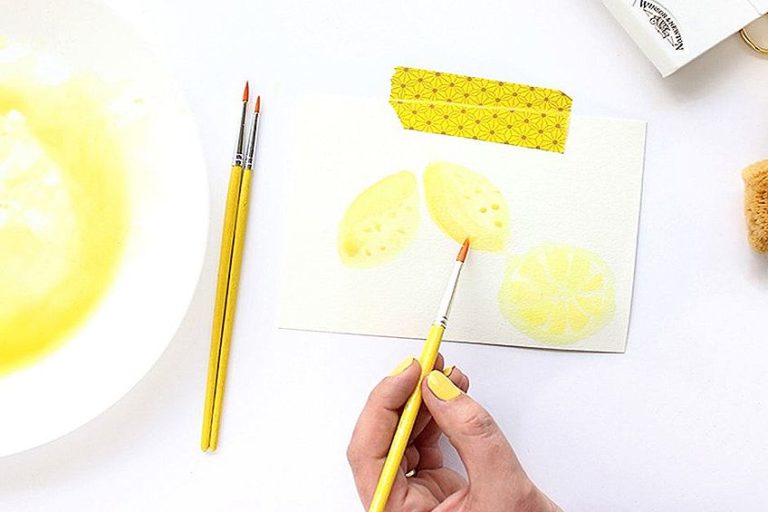How Long Does Spray Paint Take to Dry? – Spray Paint Cure Time
This post may contain affiliate links. We may earn a small commission from purchases made through them, at no additional cost to you.
With the rise of technology, we no longer lack any choice when it comes to painting. Originally, we were limited to applying paint with paintbrushes or rollers which would take much longer, as well as making you wait so much longer for the paint to dry. With the invention of spray paint, the length of time a paint job takes has shortened immensely. This means that production is faster, and more jobs can completed. This tutorial is all about the drying times of spray paint. How long does spray paint take to dry? Well, you will find out if you keep reading! Naturally, there will be some differences when it comes to spray paint dry times when it comes to the different types of paints and spray painting in high humidity or using spray paint in cold weather. We will even include some of our best suggestions to help you with your spray paint dry timer. So, if learning about spray paint cure time is why you are here, you can bet that you are on the right page at the right time!
Table of Contents
Spray Paint Explained
Spray paint has been around for long enough for it to have become a staple within the painting community. Most people will have a rough ride on how the canisters disperse the paint through the nozzle and they will probably have had their attempts at spraying a canister a few times in their lives at least. You may not have mastered it, but we will be able to help you with that if this is hitting home with you. By the end of this tutorial, you will be an expert in the field of spray paint – in theory at least.

Essentially a spray paint canister is cylindrical, and when you shake it up and down you will hear the clanging of a little metal ball inside. This is to help keep the paint in a thin consistency inside the canister when you shake it. The actual canister is made out of an aluminum metal that is quite lightweight. Once the cans have been filled with the paint, they are then filled with hydrofluorocarbon (the part that acts like compressed air). When the trigger is pressed, it opens a valve, and air goes rushing into the can and it manages to displace the hydrofluorocarbon and forces the paint to come through the nozzle and sprays in a fan pattern.
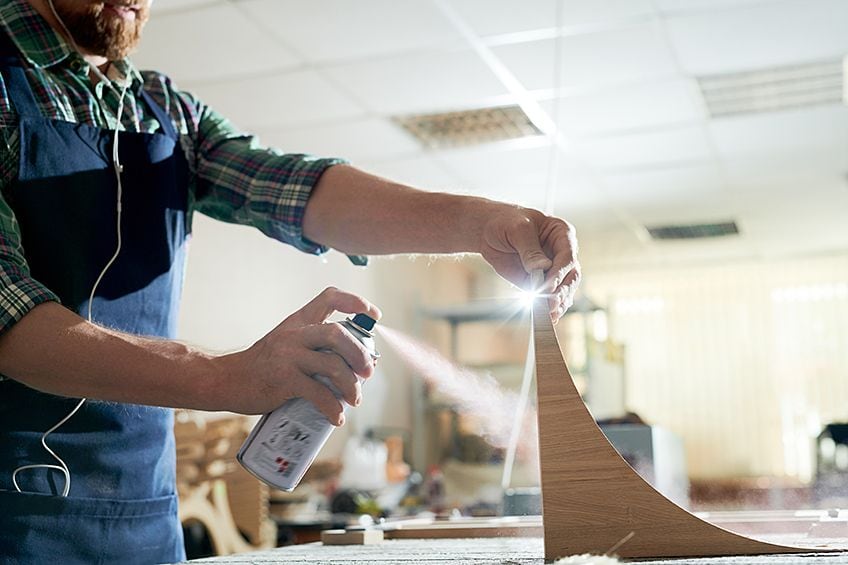
Drying Times for Various Spray Paints
Drying and cure times for spray paint dry vary amongst the many different types of paint that come in a spray canister. Just like with all paints, many types of paint can be applied via a hydrofluorocarbon canister. Here are some examples, along with the length of time they need to dry.
| Types of Paint | Dry Times |
| Oil Paint | Dry to the touch in 8 hours, fully dried in 24 hours |
| Enamel Paint | Dry to the touch in half an hour, fully dried in 8 hours |
| Acrylic Paint | Dry to the touch in 10 minutes, fully dried in 8 hours |
| Latex Paint | Dry to the touch in 5 minutes, fully dried in 1 hour |
Variables That Influence Drying Time
Drying time is not the same in every climate or for every surface material. If you are spray painting in high humidity or using spray paint in cold weather, it will affect how long to let spray paint dry fully. There are several reasons why certain spray paints might take a little longer than others to dry. We will briefly, yet descriptively, run through a few of these factors.
Local Atmospheric Conditions
Your workspace temperature might not seem to affect the dry time of spray paint. However, the surrounding temperature can influence the spray paint’s cure and dry time dramatically in some cases. It is critical to keep in mind that humidity can greatly affect the drying time of your paint. If the humidity level of your immediate environment or that of the ambient weather outdoors is high, your paint will not cure as quickly as you would like.
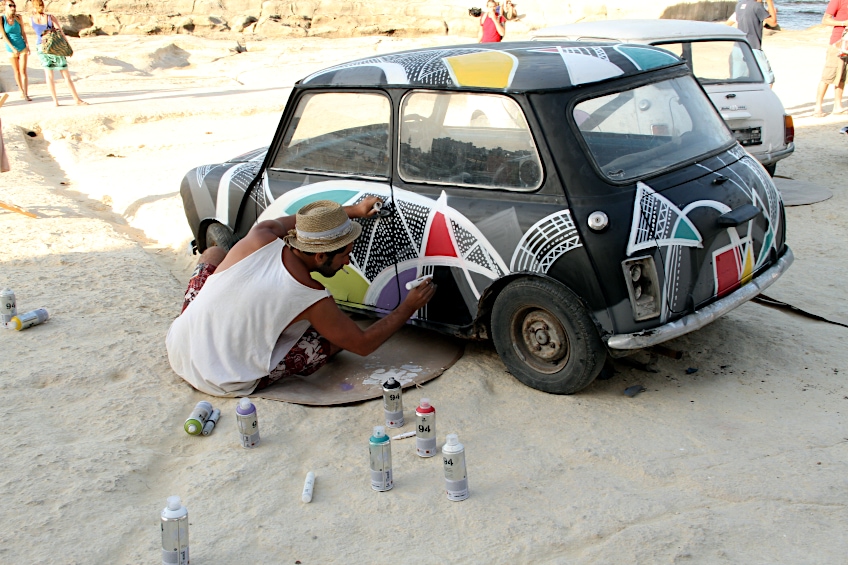
A dehumidifier might be your best option because it will decrease the moisture in the air and subsequently reduce the time it takes for your paint to dry. It is possible to spray paint in high humidity, but it is not recommended if you have a short deadline. This is because the paint will take longer to dry, so the second and third coats will need more time in between before they can be applied.
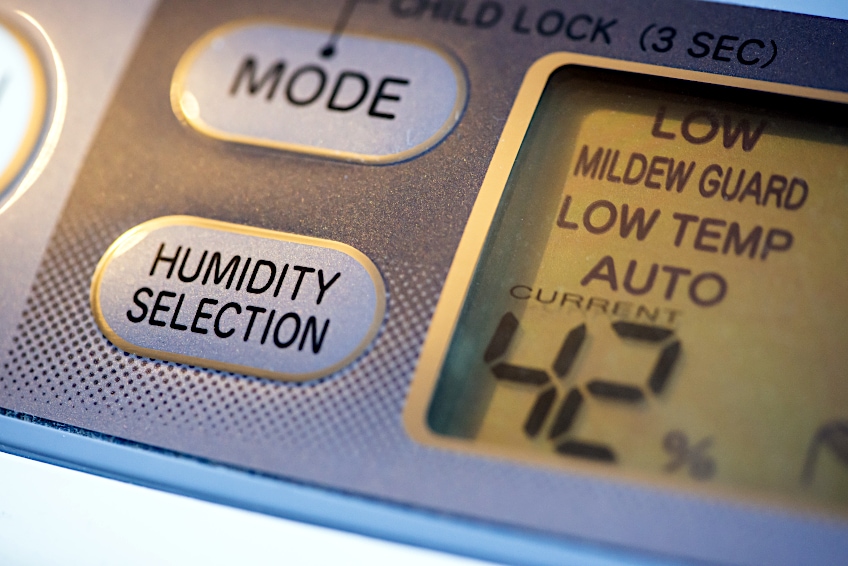
Applying spray paint in extremely high and dry temperatures is not the ideal situation, because the paint will dry too fast and this puts it at risk of cracking. You may also find that spray paint runs excessively in extremely cold temperatures, ruining the smooth and even finish.
Surface Friction
Surface friction is used to describe the roughness of the surface texture. Some textures are porous, which means they have little dents along the surface that give them absorbent qualities. Or, it can be raised with little bumps along the surface that give it some grip. The viscosity of the paint is reduced when the paint is exposed to the air outside the can. This means the drying process will begin and you will need to work a bit faster to get everything you need to be done before that happens. Make sure the surface is smooth by sanding it down before you apply the paint because overly textured surfaces mean the paint will take longer to dry.
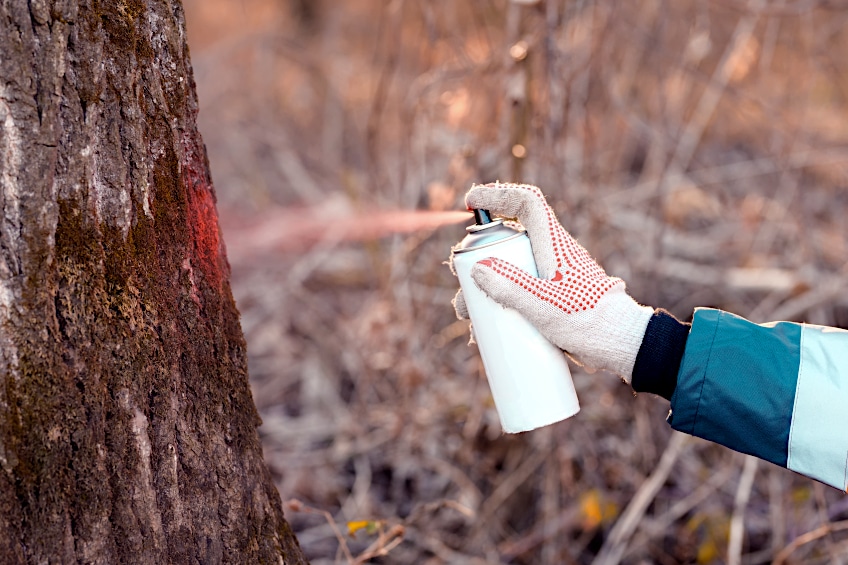
Drying Time of Various Materials
How long does spray paint take to dry on the various surface materials? The spray paints were not all equal, and neither were the surface materials. With so much diversity in this painted world, one cannot expect the drying times for spray paint to be the same. Some surface materials are more porous than others, and others are much harder and smoother so the paint will just sit there taking its time to dry.

The various surface materials are one of the biggest influential factors that will change the time you wait for the spray paint to dry fully. Some surfaces are more absorbent than others and this needs to be taken into account. Wood or Styrofoam are two great examples of this type of surface material. The paint soaks into the wood’s fibers and pours out of Styrofoam, which can make painting them a bit tricky, especially if you are using aerosol spray paint.

If the surface you are spray painting on is electrically conductive to a certain point, then the paint will dry faster. If it is less conductive it will take longer to dry. This applies to metal in particular because it is a highly conductive material. If the metal surface you are spraying on is exposed to heat, it can expand and then shrink again when it cools down. This will affect the drying time immensely. Wood, on the other hand, is very porous, so if it is untreated and exposed to rain or liquid in general, it will become soggy and oversaturated. This means you will struggle to get the paint to adhere to the surface, let alone dry properly.
The convenient thing about enamel paint is how suitable it is for extreme temperature environments, this is why enamel is often used where the metal surface is exposed to a lot of heat, such as on the engines of motor vehicles because enamel paints compensate for the material’s characteristics.

Drying Time for Various Spray Paint Applications
The surface plays a massive role in drying spray paint, as well as the type of paint that was applied and the climate and weather conditions you are painting in. If you are looking to learn how to make spray paint dry faster you might want to take a look at how you are applying it. Spray paint can be applied in various applications and this will influence the length of time it takes to dry. How? Well, it might not seem obvious to you, but if you apply a thick layer of the paint onto your surface, it will take much longer to dry – regardless of the type of surface or climate you are painting in.
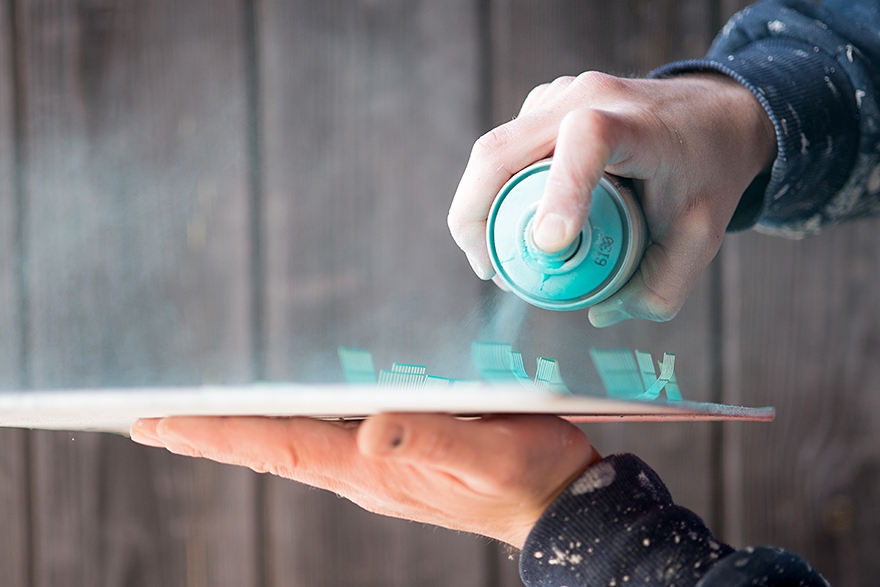
When you apply a thin layer, the drying spray paint is going to take much less time than the thicker layer. You will need to paint a few coats with spray paint to achieve that professional-looking finish, but you must wait for the paint to have dried properly before you paint the next coat.
How Long Does Paint Take to Dry on Different Surfaces?
Taking into account the different surfaces you are spraying on will make a massive difference to the spray paint drying times. Most people who are inexperienced at working with spray paints will just paint on any surface they can get their hands on, without any understanding of how long they will need to wait before it has dried. We will discuss, in detail, the length of time the spray paint will need to dry.
How Long Does Paint Take to Dry on Plastic?
You may be bored at some point during winter when the rain prevents you from making missions outside. Or possibly during the lockdown saga, you might have tried to occupy your mind from the inevitable boredom of doing nothing by trying your hand at spray painting. Maybe you have some old outside plastic furniture that needs some sprucing up, or maybe you want to redesign your Tupperware.
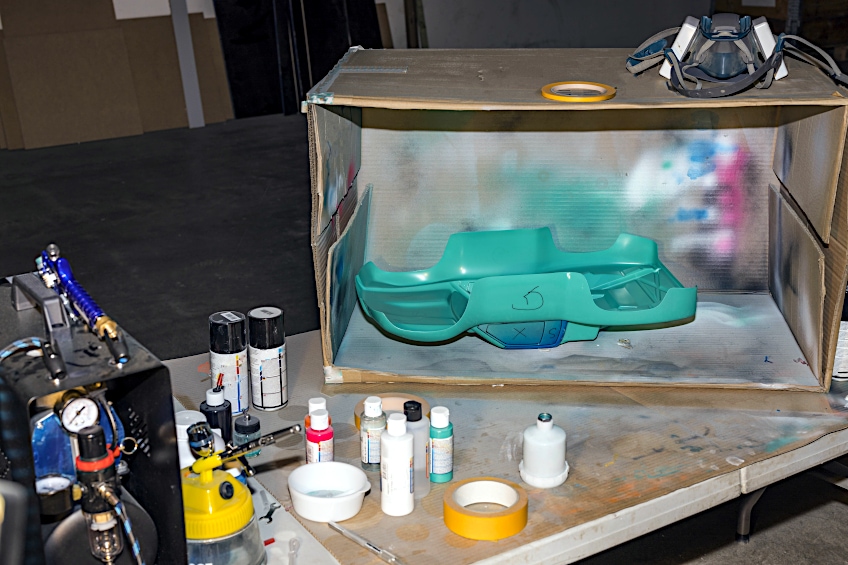
One thing to take note of is that not all spray paints will work on plastic, so you will need to make sure you have the right kind of paint. Ultimately, you will need to wait about half an hour for the spray paint to dry when applied to a plastic surface, provided you used the right type of paint.
How Long Does Paint Take to Dry on Metal?
Spray painting on metal is actually extremely laborious. This can take you an immense amount of time because of how hardy the material is. It is also quite smooth, making it hard to stick to the surface. As we mentioned before, metal is a good conductor of heat and cold, so it can be somewhat difficult to determine a dry time for metal. One added bonus when spray painting metal is the fact that the surface of the metal can be quite hot, and that will not affect the paint job. On the other hand, the paint will take much longer to dry when applied to a metal surface than it would with other materials.
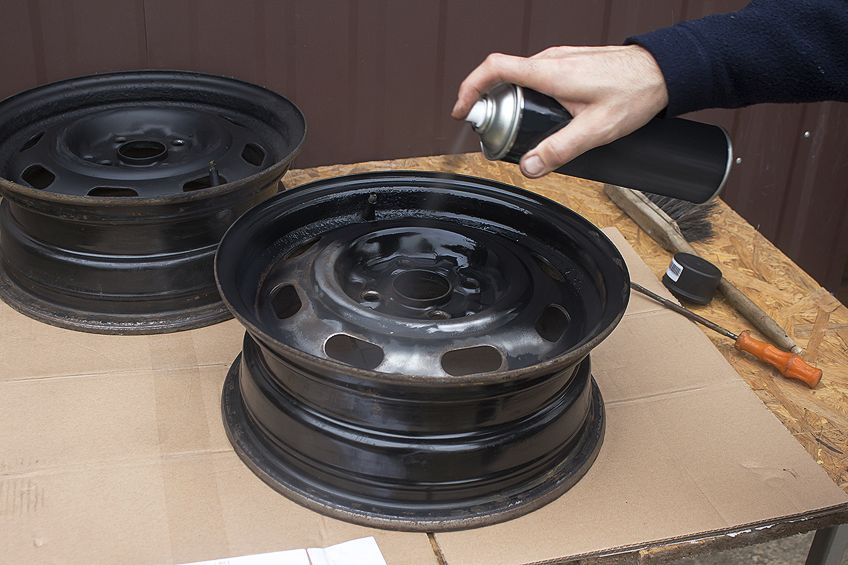
In the case of cold metals, spray paints can be applied marginally better, but if the ambient temperature is below freezing, spray paints will either freeze or crack in contact with the metal because, as I mentioned before, metal retains extremely high levels of energy.
Spray paint will feel dry (when you touch it) when it is applied to a metal surface, after a few hours of being applied, and double that time to cure properly Even after a primer has been applied to the surface of the metal, the above mentioned is under ideal conditions.

Spray Paint Drying Time for Wood Applications
Wood is definitely the most commonly used surface material for spray painting jobs. You can use spray paint to paint your furniture at home or paint the railings to your deck outside your home. There are a number of reasons why one would want to spray paint a wooden surface. There is a possibility that spray paint will require a longer time to dry not only on the surface of the wood but also within the wood fibers if the wood was pressure-treated or the kiln drying was not done properly. Oil paint is much thicker than other types of paint like acrylic or latex paint which means it will take much longer to dry as it will not seep into the pores of the wood.
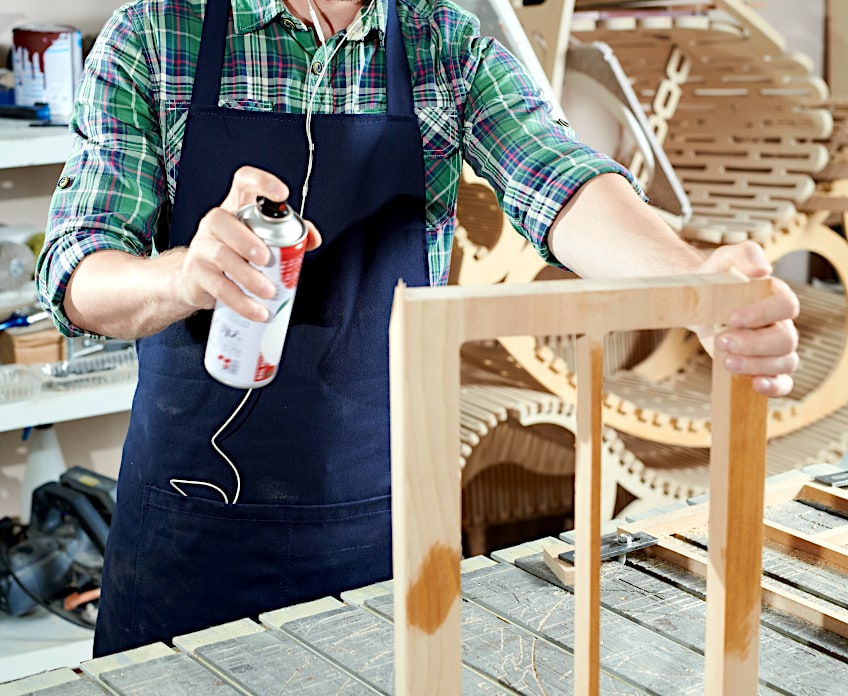
If you reduce the ambient temperature of your workspace, both on the surface as well as on the interior of the wood, the paint will dry quicker. Latex paint is much thinner so it dries faster, but at the same time, it is much more brittle. You might appreciate the faster drying time, but will the person using the item you have spray painted appreciate the paint job flaking or chipping after some time has passed?
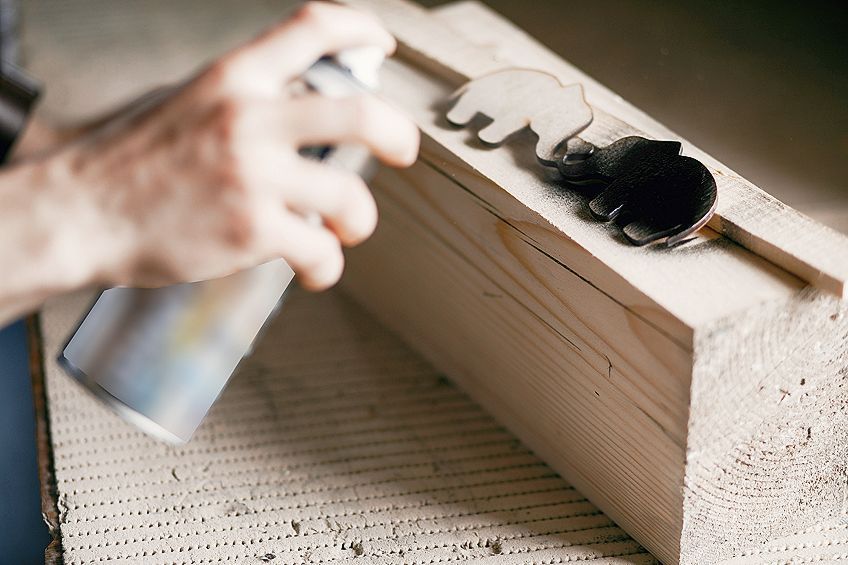
How Long to Let Spray Paint Dry?
How long does spray paint take to dry? Well, that is the question of the tutorial is it not? This is an important factor to remember because it will explain how long you will have to wait until you can use the item you just sprayed. Make sure that if you are working indoors that there is ample airflow in the room you painted in. open up the windows and doors for this to be increased, and then the paint will dry much faster. If the room is stagnant in airflow, then you will have to wait much longer for the paint to dry.
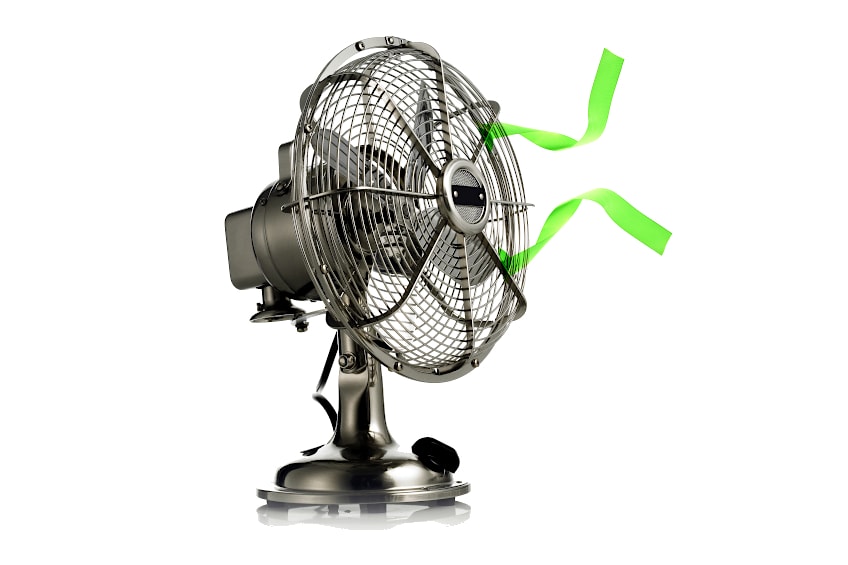
Surface Dryness
This might seem obvious to most of you, we hope so at least. If the surface you are painting on is wet, you might find that the paint will not stick to the surface properly, especially if you are painting with oil-based paints. Making sure that the surface is dried will ensure the paint dries much faster.

The term surface dryness is referring to how dry it feels to the touch. When spray paint, or any paint, starts to dry, the initial phase is surface drying. This means that when you touch it, it feels dry, but there is still wet paint under that first layer. So, how long for spray paint to dry to the touch depends on the paint used.
Some paints need about 30 minutes for surface dryness to take place, and then a few hours for the full curing process to happen.
Touch Dryness
Touch dryness is the term used when the surface is dry to the touch, but then some pressure is applied, does the surface crack under the pressure and reveal the still wet paint underneath? Or is it dry fully and withstand the pressure you apply? If it feels squishy, then the paint is still wet, and the touch dryness still needs to catch up.
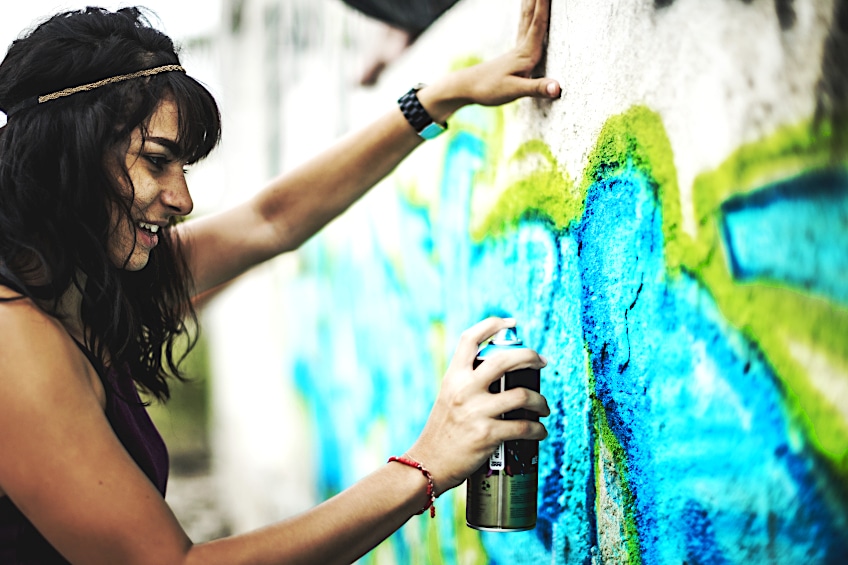
Hard Dryness
Hard dryness is the term we use to explain that the paint has dried fully, but it may not have cured yet. When you touch the surface of your dried paint, does it feel firm to your touch? Or is it still feeling squishy? The squishiness means that the paint is still wet, and the hardness means it is beginning to cure.
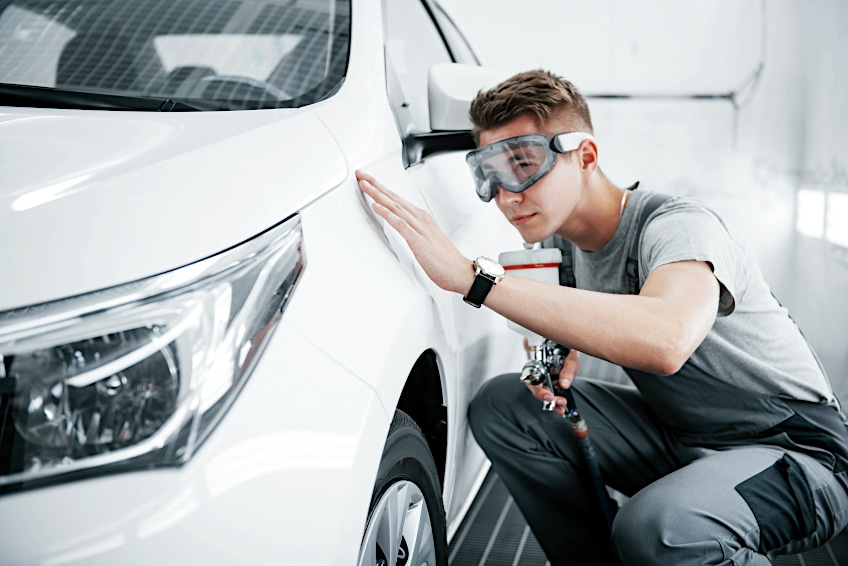
Thorough Dryness
Thorough dryness means that the paint is fully dry. After the spray paint cure time is complete and the curing phase has occurred fully, you can now put the item you have painted into action. Make sure that the paint has dried entirely before you use whatever item you have painted. This will prevent any chips or smudges from happening in the areas where the paint has dried fully.

Length of Time Between Coats of Spray paint
As you may have guessed, we are learning how to spray paint and how long the paint will take to dry. If you are needed to spray a second or third layer, then you will need to wait for the first layer to have dried properly before you do so. As a rule of thumb, we advise leaving the freshly painted paint to dry for at least several hours before you even think about touching it – let alone using the item you have painted. This will require some patience, but we know that you have it within you! The most frustrating thing is touching the paint too early, and you are left with annoying fingerprints on the paint or even a smudged dent.
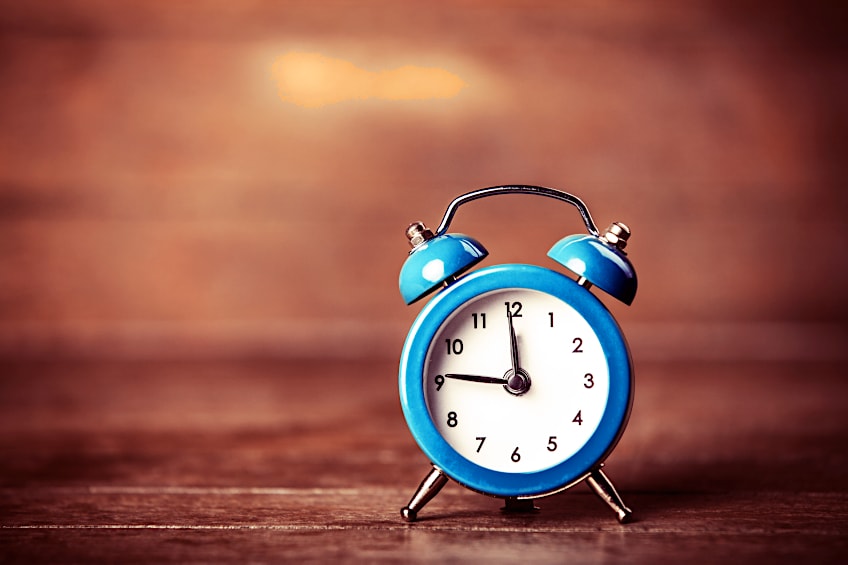
Spray a Thin Layer
If you over-saturate your paint, it’s going to take a long time for it to dry since applying paint in really thick coats is going to take a very long time. Using multiple thin coats is a perfect way to shorten the drying time, and makes achieving a professional-grade super easy finish as there’s less chance of paint bubbling or overspray. If you would like to try this technique, be sure to sand down your spray paint between coatings after making certain that the initial layer of paint has dried completely before applying the second layer.
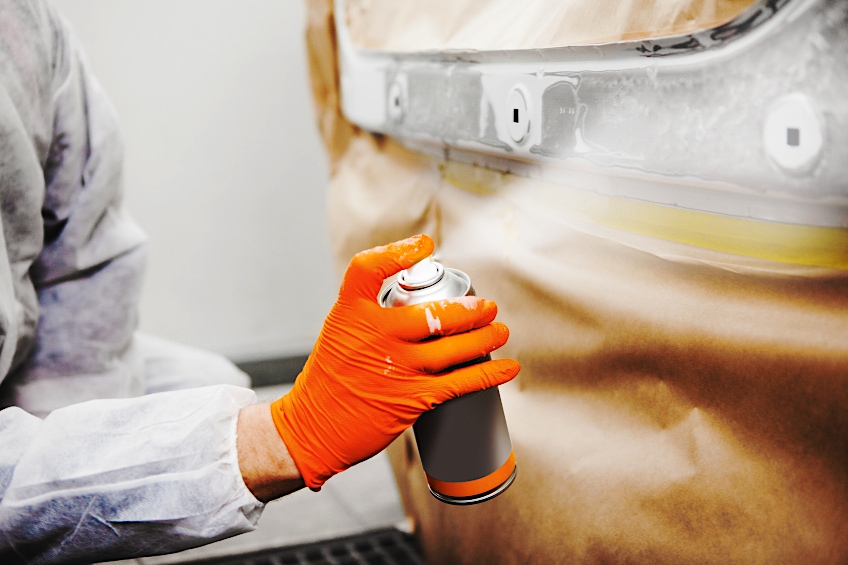
Primer Drying Time
A primer (if you were not aware already) is the layer that you apply before the paint. The paint will stick to the surface much better than if you were to leave out the primer. This can be very helpful if and when you are wanting to paint a surface that does not like spray paint very much, like plastic. A primer will also help the paint job last much longer on any type of surface, whilst also protecting the surface material from any liquid spills or damages.

Primers will have varying drying times, just like paints do. This will depend on the brand you purchase the primer from, as well as the climate you are painting in. If you are in a dry environment then the primer will dry much faster, and if you are in a humid environment then the primer will take much longer to dry.
Using a Heater to Reduce Spray Paint Dry Time
Remember when we mentioned earlier that extremely hot weather is not exactly ideal for drying your spray paint because it can put the paint at risk of chipping? Well, this also applies to adding heat in the form of a heater or a hairdryer to make the paint dry faster. If you want to learn how to make the paint dry faster, we advise changing the temperature of the room that you are spraying in with the thermostat, or a heater. We strongly advise avoiding the use of a hairdryer to heat the actual object because that will cause the paint to crack as we mentioned.
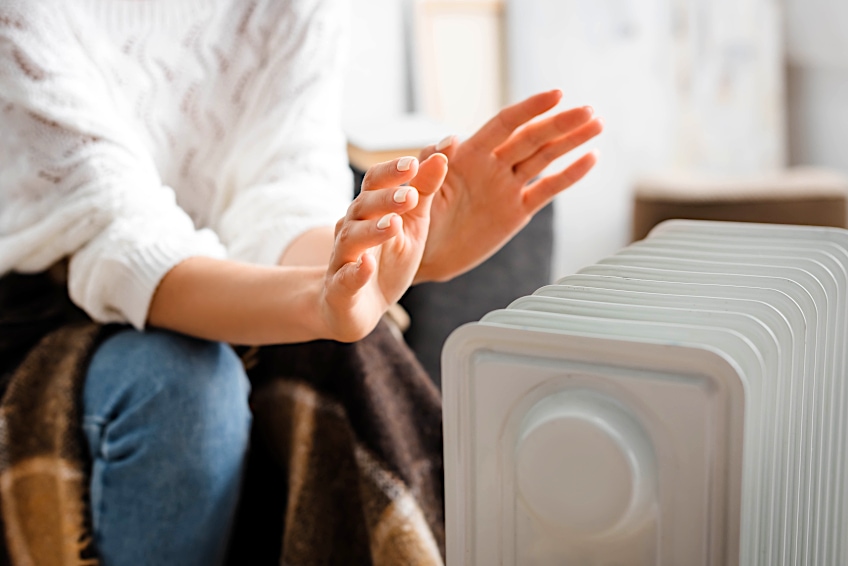
Reducing Humidity to Speed up Spray Paint Dry Time
The best way to reduce the humidity in the room is by busting out your dehumidifier. This machine is perfect for sucking up the moisture in the air and making it a dryer climate for that room only. Make sure that the windows and doors are closed so that more humidity does not come creeping in.
Having gained all the information you need about spray paint, how it is made, how it is applied, how to make the paint dry faster, and what variables will influence its dry time, it is time to put it to the test. Make sure that you are wearing the appropriate protective gear when you are painting, and then you can open up the windows and doors to allow airflow through the room you are painting in. This will lessen the time you need for the spray paint to dry.
Frequently Asked Questions
What Is the Drying Time for Spray Paint on Wood?
How long to let spray paint dry when applied to wood all depends on the actual type of wood you are applying it to. On a general note, you will need to wait about half an hour for the spray paint to dry, but some wood surfaces are not as absorbent and it may take a couple of hours to cure fully.
How Long Does Spray Paint Take to Dry on Metal?
Metal is the better surface material for spray paint because the drying time is much shorter, especially compared to wood. There are a few factors that might increase or decrease the drying time, but ultimately the wait is short. This may vary if you have been spray painting in high humidity or spray painting in cold weather.
When Should You Sand Spray Paint?
Sanding spray paint should only happen once the paint has fully dried. In most situations where the climate is ideal, the paint should take 30 minutes to dry, and then you can sand it down for the next coat of spray paint.
Larissa Meyer is a 32-year-old mother from Michigan and creative spirit since childhood. Her passion for painting and drawing has led her to an education as an illustrator and a career as a freelance graphic designer. She has a Bachelor of Fine Arts in Illustration and a degree in Graphic Design. Larissa is a talented artist who is able to master a wide range of styles and techniques to bring her artistic vision to life. Her greatest passion is currently fluid painting and epoxy resin art. Larissa’s love for art and her knowledge and experience in illustration make her the perfect Creative Director for our fluid-painting.com team. She is the creative head of our team and shares her passion and knowledge with our community through articles and tutorials.
As a mother of a 2-year-old daughter, Larissa also understands the importance of fostering creativity in early childhood. She uses her experience and knowledge to help other parents inspire their children and develop their artistic skills as well.
Learn more about Larissa Meyer and about us.



